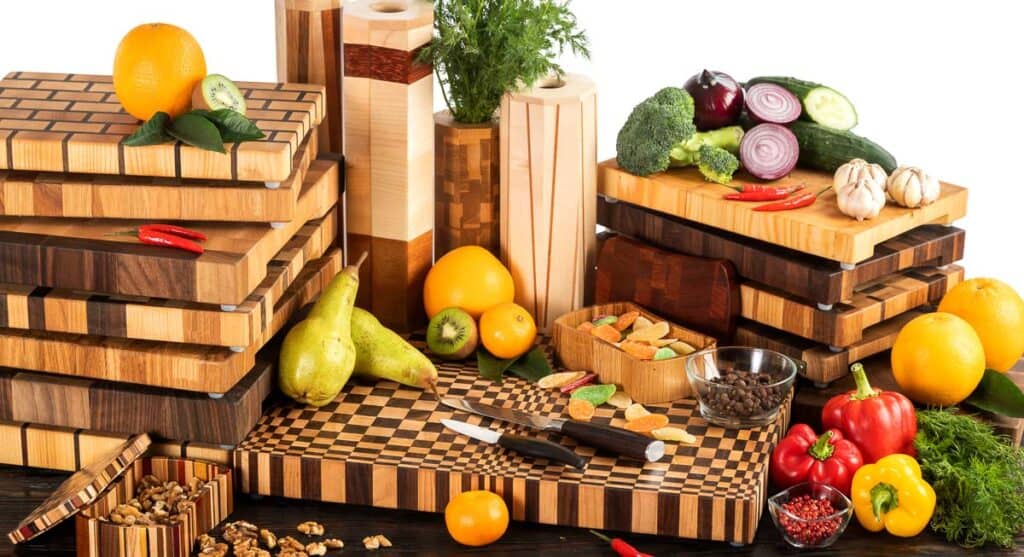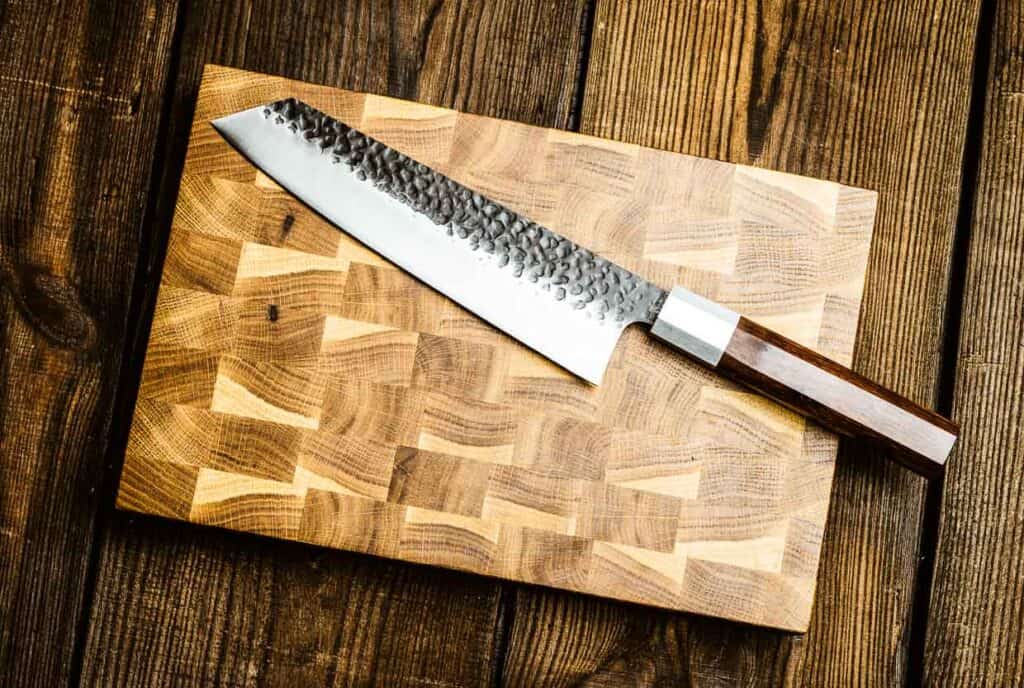Wooden cutting boards are kitchen essentials because they are durable and look beautiful. Every time you chop, dice or julienne, your cutting board is right there, taking the brunt of those knife hits. Such an essential kitchen tool needs proper maintenance to stay clean and safe for years.

Cleaning a wooden cutting board isn’t just about keeping it looking good; it’s also about food safety. A well-maintained board also resists warping and cracking. Regular cleaning with simple products and techniques and periodic oiling will keep your wooden board in top shape.
Daily cleaning
To keep your wooden cutting board in the best condition, clean it after each use. Incorporate these daily cleaning practices into your routine.
- Wiping and scraping: Scrape off any food particles using a bench scraper or spatula. Immediately wipe down your board with a clean, damp cloth to remove the remaining residue.
- Soap and water: Then clean the cutting board by applying mild dish soap to a soft sponge and gently scrubbing with hot water. Rinse the cutting board thoroughly so no soap remains.
- Dry: Dry the board with a clean towel, then let it completely air dry. Stand it upright to allow air circulation and ensure it dries completely.
Deep cleaning
You should deep clean your cutting board once a month or more often if you use it heavily. This prevents bacteria buildup and keeps your board in good condition, extending its life.
- Deodorizing: Lemon juice and salt can be used to deodorize your cutting board. Start by sprinkling the board with coarse salt. Then, rub the board with half a lemon, using the cut side to push the salt around. Let it sit for 5 minutes to let the combination work. Scrub away leftover residue, rinse it well and let it air dry.
- Disinfecting: Mix 1 tablespoon of bleach with a gallon of water to disinfect your cutting board. Dip a cloth in the bleach solution and wipe the board all over. Let it stand for a minute, then rinse the board off and let it air dry.
- Removing stains: To tackle stubborn stains, make a paste of baking soda, salt and water. Apply the paste over the stained area and let it sit for a few minutes. Then, gently scrub it with a brush. Rinse the cutting board thoroughly and let it air dry.
“I use exclusively wooden cutting boards. Mostly, we wash them with soap and water to clean them. The important thing is to keep them oiled with food-grade mineral oil. And once a month, I make a paste with coarse salt and lemon juice and use the lemon I squeezed juice from to scrub it. They’ll last decades.”
— Michelle Price, Honest and Truly

Oiling and conditioning
Proper oiling and conditioning help keep your wooden cutting board durable and looking good, preventing drying out or cracking. Oil your wooden cutting board once a month or whenever the wood looks dry.
The right oil for your cutting board
Choosing a food-grade oil is essential since other types become rancid. Mineral oil is the most common choice. It is long-lasting and resistant to rancidity. Fractionated coconut oil also works. It is specially treated, so it stays liquid at room temperature and doesn’t spoil.
You can buy specially formulated cutting board oils, which are odorless and colorless and will not affect the taste of your food. However, food-grade mineral oil is the most budget friendly and widely available choice.
How to oil your wooden cutting board
Applying oil to your cutting board is a simple process that significantly extends its lifespan. First, clean the board thoroughly and make sure it is completely dry. Then, apply a generous amount of oil over the entire surface of the board.
Use a soft cloth or a paper towel to rub the oil into the wood, following the grain. Let the oil soak in for a few hours or overnight. Wipe off any excess with a clean cloth.

Mistakes to avoid
Avoiding these common mistakes will extend the lifespan of your wooden cutting board. That means it will remain a beautiful and functional addition to your kitchen for years to come.
- Submerging in water: Never soak your cutting board in water. Prolonged exposure to water can cause the wood to swell and crack.
- Using harsh chemicals: Avoid using harsh chemical cleaners. They can damage the wood and leave behind harmful residues.
- Improper storage: Always store your cutting board in a dry area and stand it on its edge to allow air circulation. This avoids moisture buildup, which could lead to mold growth.
- Using the dishwasher: Wood cutting boards should never go in the dishwasher. The high heat and intense water exposure will damage the wood over time.
With these simple cleaning, maintenance and oiling kitchen tips, you’ll be well on your way to a wooden cutting board that becomes a cherished heirloom passed down through generations. Remember, a little care ensures your board stays strong, beautiful and ready to handle all your chopping needs. So, embrace wood’s natural beauty and functionality and enjoy the unique character your board develops over time.
Anne Jolly is the creator of the food blog Upstate Ramblings. She loves to cook with gadgets like an air fryer, sous vide or pressure cooker. In her free time, she enjoys hiking, reading, knitting and spending time with her three kids.